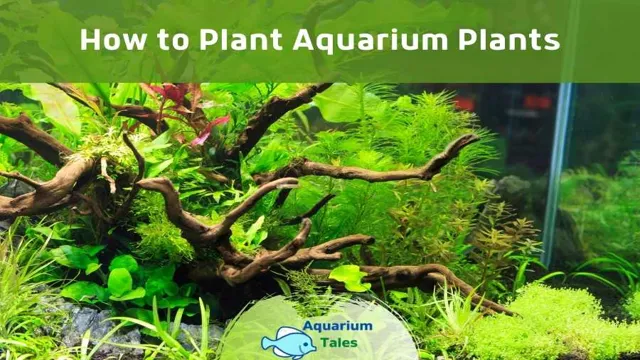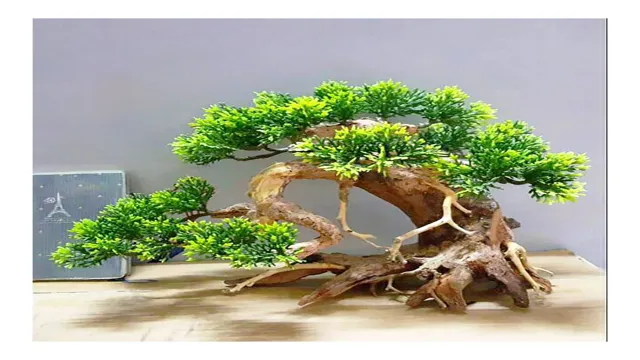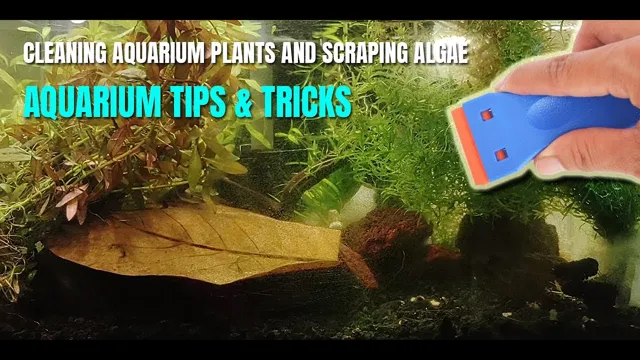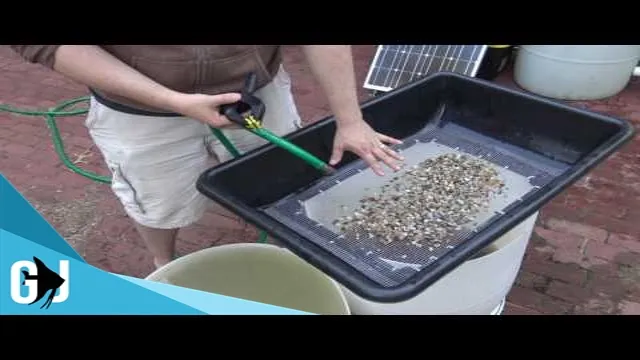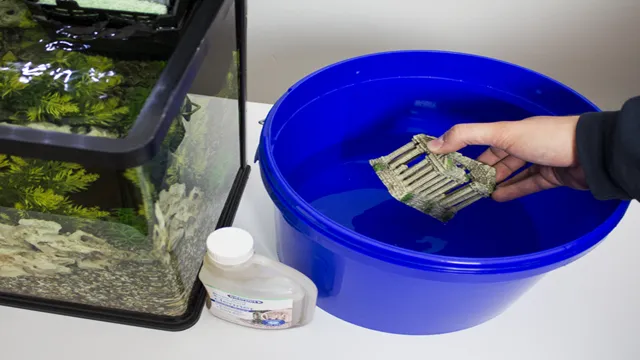If you’re a new fish owner, you might be wondering when the right time is to add plants to your aquarium. Plants can be a beautiful addition to your underwater world, but introducing them too early or too late can be harmful to your fish. It’s important to understand the benefits of adding plants to your aquarium, how to choose the right plants, and when to add them to provide a healthy and thriving environment for your aquatic pets.
Let’s dive in and explore the best practices for introducing plants to your aquarium.
Aquarium Cycling Basics
If you’re setting up a new aquarium, it’s essential to understand the basics of aquarium cycling. It’s crucial to establish a healthy ecosystem in your tank before adding anything to it, including plants. In general, it takes about 4-6 weeks for an aquarium to cycle successfully.
Cycling is the process of establishing beneficial bacteria that will remove harmful toxins from the water. Once you’ve reached the point where your water tests show no ammonia or nitrite, and only trace amounts of nitrate, you can add plants to your aquarium. Adding live plants to your tank can be very beneficial as they provide oxygen, remove excess nutrients and improve water quality.
So, in short, you can add plants to your aquarium once the tank is cycled, which typically takes around 4-6 weeks.
What is Aquarium Cycling?
Aquarium cycling is the process of establishing a stable ecosystem in a new aquarium. When you set up a new aquarium, it needs to go through a cycling period to develop beneficial bacteria that will break down toxic waste produced in the tank. This process is crucial to ensure the health and survival of your aquatic pets.
During the cycling process, tiny beneficial bacteria grow and colonize your aquarium’s filter, gravel, and decorations. These bacteria convert the harmful wastes produced by fish, such as ammonia and nitrites, into less harmful compounds like nitrates. This beneficial bacteria’s growth takes time and will not happen immediately, so you must be patient and allow your aquarium to complete the cycling process before adding fish.
Without cycling, your fish will be exposed to toxic levels of ammonia and nitrites, which can be harmful and even fatal. Cycling your aquarium is essential for the long-term health and survival of your fish.
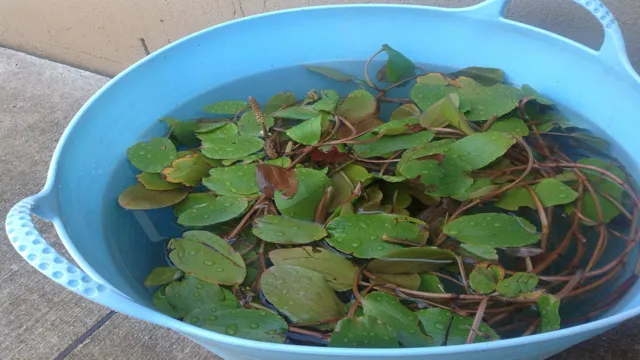
Why Does It Matter?
Cycling your aquarium is a crucial part of fishkeeping. It’s the process of establishing beneficial bacteria in your tank that will break down harmful toxins produced by fish and other organisms. Without this cycle, your fish can quickly become sick and even die.
Some signs of an uncycled tank include cloudy water, a strong odor, and high levels of ammonia. Cycling can take anywhere from a few weeks to a couple of months, depending on the size of your tank, the amount of fish, and other factors. But it’s worth it to ensure a healthy and thriving environment for your aquatic friends.
So, don’t underestimate the importance of properly cycling your aquarium!
Factors Affecting Plant Growth
If you’re wondering how soon you can add plants to your aquarium, there are a few factors that can affect the growth of your aquatic plants. Firstly, the lighting in your aquarium is crucial to the growth of plants. Without sufficient lighting, plants will struggle to photosynthesize and grow. (See Also: How to Go to Sea Life Busan Aquarium: A Comprehensive Guide for First-Timers)
Secondly, the type of substrate you choose can play a role in plant growth. Certain substrates, like aquasoil or planted tank substrates, are specifically designed to provide nutrients for plant growth. Thirdly, the level of carbon dioxide in your aquarium can also affect plant growth.
Plants use carbon dioxide for photosynthesis, so ensuring that levels are adequate can help promote healthy plant growth. Finally, the type of plants you choose will also affect the growth rate. Some plants are easier to care for and grow quickly, while others may require more attention and take longer to establish themselves in your aquarium.
Overall, the key to successful plant growth in your aquarium is to create an environment that meets the needs of your specific plants. With patience and attention to these factors, you can successfully add plants to your aquarium in no time.
Lighting
Lighting is a key factor in the growth of plants. The intensity and duration of light that plants receive can affect their ability to photosynthesize, influencing their growth rate, yield, and overall health. For example, many plants require a minimum amount of light each day in order to grow and thrive.
In addition, the quality of light is also important, with different wavelengths of light affecting different aspects of plant growth and development. This is why many growers use specialized lighting systems that provide specific wavelengths of light to optimize plant growth. Other factors that can affect plant growth include the distance of the light source from the plant, the temperature of the surrounding environment, and the duration of the light cycle.
By understanding these factors, growers can manipulate the lighting conditions to improve plant growth and maximize yields. Overall, it is clear that lighting is an essential factor in creating an ideal environment for plants to grow and thrive in.
Water Chemistry
Water chemistry plays a vital role in the growth and development of plants. Factors such as pH level, dissolved oxygen content, salt concentration, and nutrient availability all contribute to the overall health of plants. A pH level that is too high or too low can cause plants to struggle to absorb necessary nutrients from the soil.
If the dissolved oxygen content in water is not adequate, plants can suffocate and die. Similarly, the concentration of salts in water can inhibit a plant’s ability to absorb water, causing dehydration and eventually leading to death. Furthermore, the availability of nutrients like nitrogen, phosphorus, and potassium is crucial for proper growth and development.
Understanding and regulating these factors in water can help promote healthier and more productive plants. As gardeners and farmers, it is essential to pay attention to water chemistry to ensure the optimal growth of the plants we cultivate.
Substrate
Substrate Plant growth is dependent on various factors, and one of the most important ones is substrate. A substrate or growing medium is the material in which plants grow, and it can range from soil to soilless media such as perlite, vermiculite, or sand. The substrate should provide sufficient air, water, and nutrients to support plant growth.
The texture, structure, and chemical composition of the substrate all have an impact on plant growth. For example, a substrate that is too compacted can limit root growth and reduce water and nutrient uptake. In contrast, a substrate that is too loose can lead to poor anchorage of the plants. (See Also: How to Kill Ciliates in Aquarium: Effective Strategies for Eliminating Harmful Parasites)
The pH of the substrate also plays a significant role in plant growth, as different plants thrive in different pH ranges. Therefore, it is important to ensure that the substrate used matches the specific requirements of the plants being grown. Overall, choosing the right substrate is crucial to ensuring healthy and robust plant growth.
When to Add Plants to the Aquarium
One of the most exciting parts of starting a new aquarium is adding live plants to the mix. But how soon can you add plants to your aquarium? It’s essential to have a properly cycled tank before adding any live plants. This means waiting until beneficial bacteria has had the chance to establish itself in the aquarium, which can take anywhere from two to six weeks.
Adding live plants too soon can result in rotting or decaying, which can harm the tank’s ecosystem. Additionally, ensure that your lighting and nutrient levels are suitable for the type of plants you plan to add. Some plants require high levels of light and nutrients, while others do better with lower levels.
Overall, while it can be tempting to jump right into adding live plants to your new aquarium, it’s crucial to take the time to cycle your tank properly and ensure that the tank’s environment can support the plants you plan to add.
After the Nitrogen Cycle Completes
Adding plants to your aquarium can be a thrilling experience, but it’s essential to understand when to do it. After the nitrogen cycle completes, which usually takes around four to six weeks, it’s time to add plants to the aquarium. This is because the nitrogen cycle process should have produced enough beneficial bacteria to keep the tank’s water parameters stable.
Adding plants will take your aquarium to the next level, purifying the water by using nitrates and helping to balance the nitrogen levels. It’s essential to remember that plants require appropriate lighting and substrate, and their needs will vary depending on the species. By adding plants to your aquarium, you’re creating a healthier environment for your aquatic creatures while adding a beautiful, natural touch to your decor.
When Nutrients are Available
Adding plants to an aquarium can be a great way to enhance its overall aesthetic appeal. However, deciding when to add plants can be challenging, especially when it comes to understanding the availability of nutrients. If you’re starting a new aquarium, it’s essential to make sure that the necessary nutrients are present before introducing plants.
This is because plants require a certain level of nutrients, including nitrate and phosphate, to grow and thrive. If the nutrient levels are low, the plants won’t be able to flourish, and they may even die off. You can test the nutrient levels in your aquarium using test kits or by consulting with a professional.
Additionally, adding a substrate, such as gravel or sand, can also help to promote plant growth by providing them with proper anchorage and nutrient-rich soil. It’s important to keep in mind that adding too many plants at once can lead to an imbalance of nutrients, so it’s always best to start slowly and gradually add more as necessary. Remember, healthy plants make for a healthy aquarium, so be sure to monitor their growth and adjust the nutrient levels as needed.
Conclusion
Well, my aquatic enthusiast friend, it all depends on a few factors. How patient are you? Are you willing to risk the health and safety of your fish and plants for a quick fix? In any case, it’s important to ensure that your aquarium has a stable and healthy environment before introducing any new plant life. So my advice? Take the time to properly cycle your tank, monitor your water parameters, and research the specific needs of the plants you want to add. (See Also: How to Change Aquarium Water Easily: Simple Tips and Tricks)
After all, good things come to those who wait, and a thriving, lush aquatic garden is definitely worth the patience and effort.”
FAQs
What are some important considerations when adding plants to an aquarium?
When adding plants to an aquarium, it is important to consider factors such as lighting, water quality, and compatibility with other species in the tank. It is also essential to properly acclimate the plants to their new environment to ensure their survival.
How long should I wait before adding plants to a newly set up aquarium?
In a newly set up aquarium, it is recommended to wait at least 2-3 weeks before adding plants. This allows time for the aquarium to establish a stable nitrogen cycle, which is essential for the health of aquatic plants.
Can I add plants to an established aquarium with fish?
Yes, you can add plants to an established aquarium with fish. However, it is important to choose plants that are compatible with the species in your tank and that have similar environmental requirements.
What types of plants are best for beginners?
Some easy-to-care-for and hardy plants that are great for beginners include Java fern, Anubias, and Amazon sword. These plants have relatively simple care requirements and can thrive in a variety of aquarium environments.
How do I ensure my plants get enough nutrients in the aquarium?
Providing your aquatic plants with the right nutrients is essential for their growth and health. You can add plant-specific fertilizers or supplements to the water, or choose substrate and lighting that provide adequate nutrients for your plants.
Can aquarium plants help improve water quality?
Yes, aquatic plants can improve water quality by absorbing excess nutrients, producing oxygen, and providing shelter for fish and other aquatic species. They can also help to balance pH levels and prevent the growth of harmful algae.
How often should I prune my aquarium plants?
The frequency of pruning will depend on the type of plants in your aquarium and their growth rate. As a general guideline, you may need to trim your plants every 2-4 weeks to prevent them from becoming too large and overgrown.

